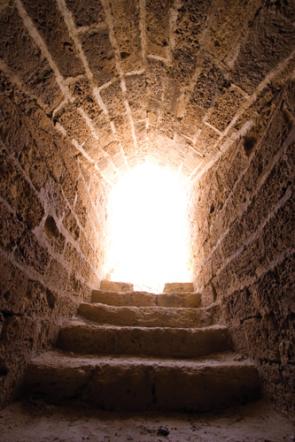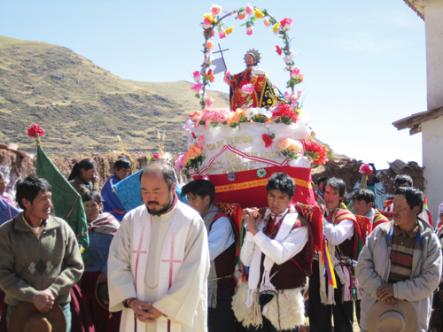 The resurrection of Christ challenges us to new life – to believe, precisely, that there are surprises hidden at the heart of death: that every scream, tear and cry is redeemed, and that God’s laughter is stronger than death. Ultimately, belief in the resurrection asks us to believe that, despite a strong experience to the contrary, reality is gracious, light does triumph over darkness, love over self-interest, justice over oppression, peace over chaos, fulfilment over hunger. Faith in the resurrection is the trust that, in the end, everything is good.
The resurrection of Christ challenges us to new life – to believe, precisely, that there are surprises hidden at the heart of death: that every scream, tear and cry is redeemed, and that God’s laughter is stronger than death. Ultimately, belief in the resurrection asks us to believe that, despite a strong experience to the contrary, reality is gracious, light does triumph over darkness, love over self-interest, justice over oppression, peace over chaos, fulfilment over hunger. Faith in the resurrection is the trust that, in the end, everything is good.
But it is hard, almost impossible, to believe that. Why? Because experience constantly belies it. At least, so it seems. Despair comes easier than faith. Too often self-interest, loneliness, oppression, greed, bitterness and darkness triumph in our world. It seems naive not to believe that they represent our Omega, our final unresurrected, non-redeemed destiny. The disciples of Jesus, themselves, experienced a lot of doubt, even on the original Easter Sunday. They, like us, were mourning crucified dreams.
What reversed this? What moved them from despair to new hope?
It was not just the fact of the resurrection that changed them, for they doubted, huddled in fear, locked doors, despaired and tried to go back to their old ways of life even after they had seen the empty tomb.
What brought resurrection faith was the in-the-flesh appearance of the resurrected Christ. Slowly, gently, through these appearances, Christ built up their faith until they no longer needed these appearances. We are built up in faith through appearances of Christ in the flesh. Where does the resurrected Christ have flesh in our world?
The resurrected Christ appears to us in the flesh in those persons who are arsonists of the heart, who truly make our hears burn within us. What kind of persons burn messianic holes within us? Those who speak of mustard seeds, who tell us about the value of what’s hidden, small and insignificant; those who tell us that pain can bring deep meaning and redemption; those who tell us that, despite all, reality is gracious and we can trust and love. They are those who tell us that we should be less afraid, that paranoia is an illness, metanoia is salvation; who tell us that bitterness is not noble, it’s hell, that cynicism and stoicism are forms of despair, that life is not tragic, that tears are redemptive, that the Christian call is to celebration.
They are those who tell us that it is not too late for us, that there is still plenty of time to live anew, to become what we were meant to be, beyond self-interest. They are those who tell us to make merry and dance, for all is well. These kinds of words stir what’s best within us, burn holes in us, stir faith, roll stones back from tombs, show us the resurrected Christ in the flesh.
And that flesh always looks ordinary. The arsonist of the heart invariably looks like someone we know, an ordinary somebody, like the resurrected Christ in his appearances – a gardener, a cook, a stranger.
It is interesting to speculate as to why the disciples so often didn’t recognize Christ after the resurrection.
After all, he had only been dead for a day and a half when he first appeared. Yet Mary Magdala, who surely knew him well, took him for a gardener. Later, on the road and on the shore, his disciples took him to be a stranger, then a cook. Only in the breaking of the bread did they recognize him as the Christ.
That is why as we journey together, mourning so many of our crucified dreams, we would do well to be attentive to what causes arson in the heart. We should learn to look more closely at each other’s faces during the breaking of the bread.
Fr Ron Rolheiser OMI is a public speaker, columnist and author.
Read more from The Far East, April 2014
